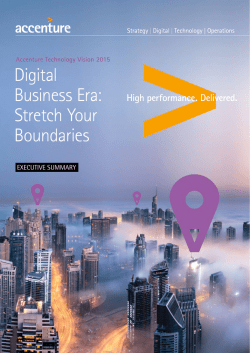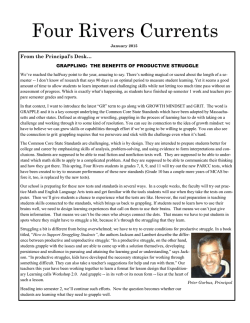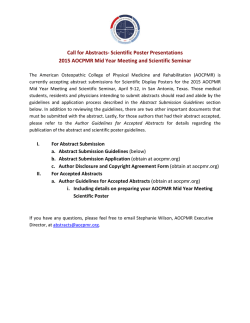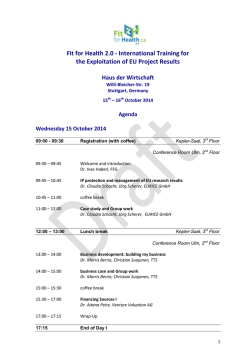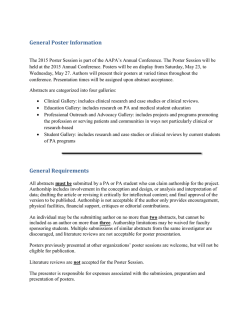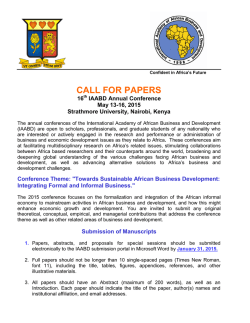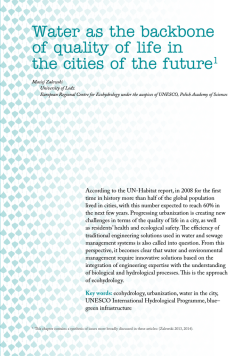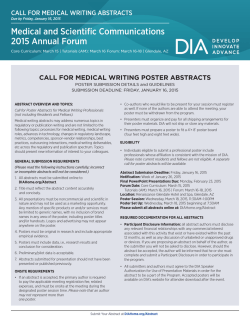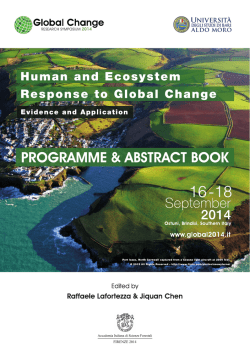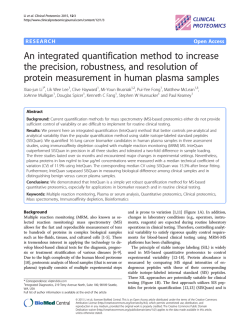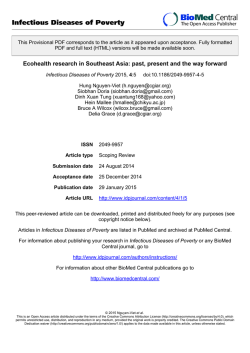
PDF hosted at the Radboud Repository of the Radboud University
PDF hosted at the Radboud Repository of the Radboud University Nijmegen The following full text is a publisher's version. For additional information about this publication click this link. http://hdl.handle.net/2066/135471 Please be advised that this information was generated on 2015-02-06 and may be subject to change. 1 – Keynote abstracts Ecosystem services in environmental management A.M. Breure Radboud University, Institute of Water and Wetland Research, Heyendaalseweg 135, 6525 AJ Nijmegen; RIVM, Postbus 1, 3720 BA Bilthoven, the Netherlands, [email protected] or [email protected] Introduction • Cultural services (such as the enjoyment provided to visitors to a national park). Generally, provisioning services are related to the material benefits (food, timber) of environmental assets, whereas the other types of ES are related to the non-material benefits (public health, well-being) of environmental assets. (Maes et al. 2013, UN 2014). In 2050, about 80 percent of the world population will be living in urban areas, many of them in lowland areas close to rivers and shores. To solve consequent major challenges with regard to a healthy and safe living environment in a sustainable way, environmental management moves from quality protection towards sustainable use of natural capital and ecosystem services (ES). Therefore, we should become aware of the services nature delivers in order to utilize them in the development of our society. Natural Capital and Ecosystem Services Natural capital comprises the naturally occurring living and non-living components of the Earth, together constituting the biophysical environment, which may provide benefits to humanity, such as water and food, mineral and energy resources, timber and other biotic resources and land to occupy. Natural Capital comprises three components (Figure 1): • Abiotic stocks, non-renewable and depletable assets (e.g. fossil fuels minerals, gravel salt etc.); • Abiotic flows, renewable and non-depletable assets linked to geophysical cycles (solar, wind, hydro, geothermal); • Ecosystems and their services, renewable and depletable. An ecosystem is a dynamic complex of plant, animal and microorganism communities and their non-living environment interacting as a functional unit. Examples are terrestrial ecosystems (e.g., forests and wetlands) and marine ecosystems. Interactions exist between different ecosystems at local and global levels. ES are the contributions of ecosystems to man and society, which may be valuated in economic terms but not necessarily. ES are provided by the combined action of living organisms (biota), and abiotic processes. They are highly specific for any ecosystem, because each ecosystem is unique. According to international conventions, ES may be divided into three groups: • provisioning services (e.g. provision of timber, (drinking) water, fish, food); • regulating services (e.g. purification of soil and water, atmospheric composition and climate regulation, pest and disease control, flood mitigation); Book of Abstracts 2014 Figure 1: The main components of natural capital (taken from MAES et al. 2013) In principle, the natural capital and ES concept can be included in an integrated framework to assess the societal costs & benefits of management decisions on development of our living environment. The concept is able to balance resource conservation and use according to how societies value consumptive goods (e.g., food, water and fuel) and nonconsumptive services (e.g., health, climateregulation, and aesthetics) provided by ecosystems (Breure et al 2012; Gilvaer et al. 2013). However, the implementation of the natural capital and ecosystem service approach in Societal Cost Benefit Analysis is still immature, because we are unaware of many services nature provides. Many non-production services are not valuated within our economic system and proper quantification and valuation methods have to be developed. Use of river systems River floodplains have historically been favoured sites for human habitation because of the provisioning of goods and services. Originally, rivers provided water for domestic and agricultural use, fish, fertile soils and possibilities for transport and waste disposal. As rivers posed also risks of flooding, resulting in losses of life and properties, river -3- 1 – Keynote abstracts systems have been changed over the centuries, e.g. by construction of dikes. Simultaneously forests on floodplains were cut to provide wood for fuel and building material, and land for agriculture. Later on changes were made to improve navigation and for energy production. The use of rivers to get rid of industrial and municipal wastes and surpluses (agricultural chemicals) caused a decline in water quality that was maximal during the 1960s and 1970s. During the following decades installation of wastewater treatment plants resulted in a drastic reduction of many pollutants (Lorenz 1999). Now the pollution has been reduced, the natural river system should be restored with floodplain forests and meandering side channels increasing water storage capacity improving fishing and recreational water, bird populations, recovering biodiversity, natural attenuation and pest control. Address trade-offs in dynamic, scale aware perspectives Trade-offs, either between different ES, or between different social groups in need of them, are strongly affected by system dynamics, and may change radically with varying spatial and temporal scales. E.g. deforestation for agriculture leads to trade-offs between food provision on the short term and increase of run-off and erosion on the longer term, eventually influencing flood risk and water supply. Leave the definition of value to the decision maker / stakeholder Valuation of ES is highly context dependent. Stakeholders may have different interests in specific services in an area at a specific time. Many services are hard to value economically. Therefore, the most optimal valuation of ES results from negotiation between the stakeholders having interest in ES in an area. Quantification of ecosystem services Why ecosystem services in Rivercare Quantification of ES is important to raise the awareness of the value of ES for our society. To estimate optimal development or management strategies of our living environment, we need an adequate understanding of the value of the various ES for different stakeholders and the dependence of our society on our natural ecosystems (Villa et al. 2014). The perspective of ES to assess human – natural system interactions considers: • Biophysical processes of service provision; • The economic outcome of service uptake by society; • Social implications of service demand, utility and equitable distribution. There is no general framework to assess and value ES so far. The following aspects of quantification and valuation ought to be taken into account: Maintenance of focus on the coupled human – natural system A transfer of benefits from nature to society characterizes ES. For description of such services, the location of the beneficiaries and the scale of influence of the natural system on them have to be determined on a case-by-case basis. Provisioning of appropriate quantitative information Quantification of ES ought to be able to extend the temporal dynamics of the system and be able to capture thresholds and tipping points that are crucial for security of the service. Explicitly address both potential and actual values Analysis of services should provide information on potential benefits as well as actually used benefits, to see whether other types of ecosystem use might be more beneficial. Book of Abstracts 2014 The aim of research on ES is to raise awareness and develop tools to, for quantification and valuation of ES for different stakeholders. The concept of ES in river management is a powerful tool for evaluating strategies for management of natural resources and sustainable societal behaviour. References Breure, AM, De Deyn, GB, Dominati, E, Eglin, T, Hedlund, K, Van Orshoven J, Posthuma, L (2012) Ecosystem services: a useful concept for soil policy making! Current Opinion Environmental Sustainability 4: 578-585. Gilvaer, DJ, Spray, CJ, Cases-Mulet, R (2013). River rehabilitation for the delivery of multiple ecosystem services at the river network scale. Journal Environmental Management 126: 30-43. Lorenz, CM (1999) Indicators for sustainable management of rivers. PhD thesis Vrije Universiteit Amsterdam. 260 p. Maes J, et al. (2013) Mapping and Assessment of Ecosystems and their Services. An analytical framework for ecosystem assessments under action 5 of the EU biodiversity strategy to 2020. Publications office of the European Union, Luxembourg. Available at: http://ec.europa.eu/environment/nature/knowledge/ecosys tem_assessment/pdf/MAESWorkingPaper2013.pdf UN (United Nations) (2014) System of EnvironmentalEconomic Accounting 2012—Central Framework. Available at: http://unstats.un.org/unsd/envaccounting/seeaRev/SEEA _CF_Final_en.pdf Villa, F, Voigt, B, Erickson, JD (2014) New perspectives in ecosystem services science as instruments to understand environmental securities. Philosophical Transactions of the Royal Society B 369: 20120286 -4-
© Copyright 2025

